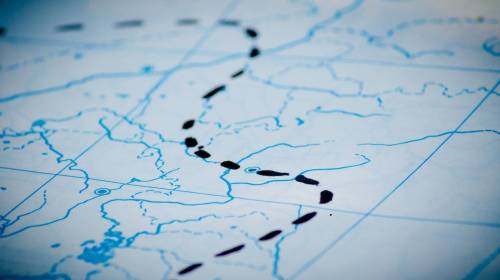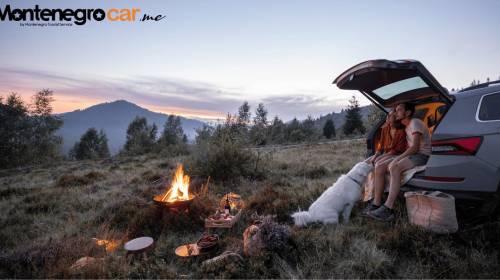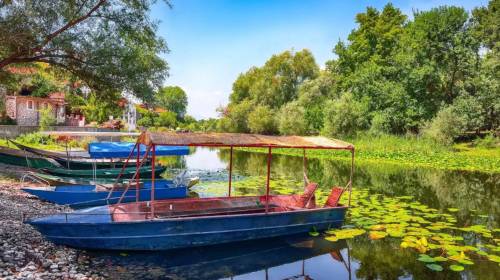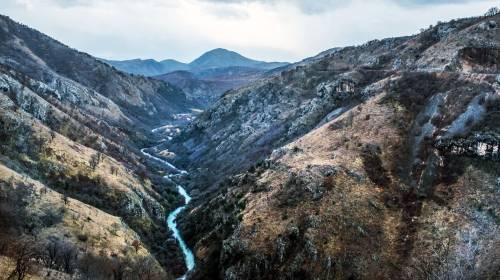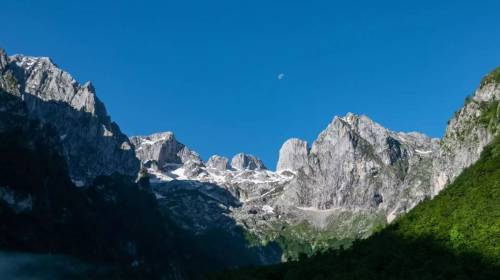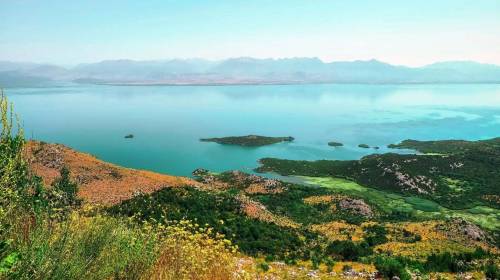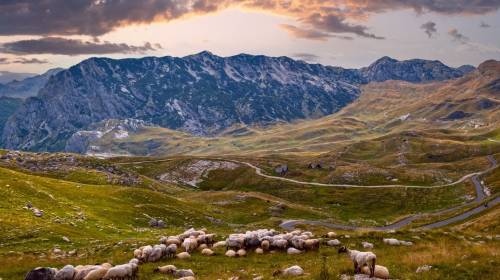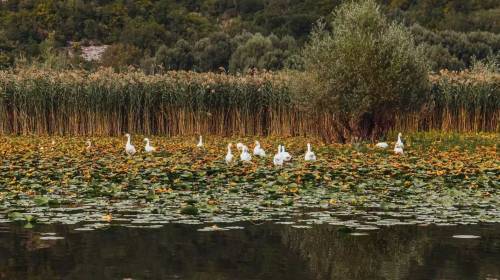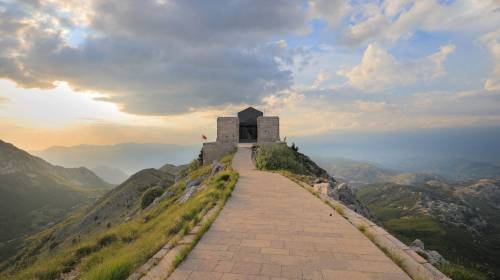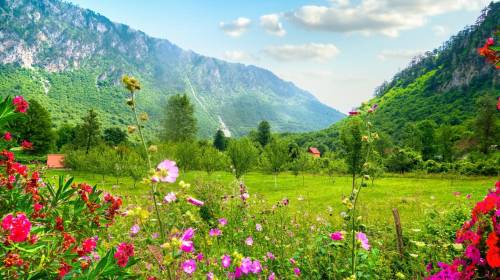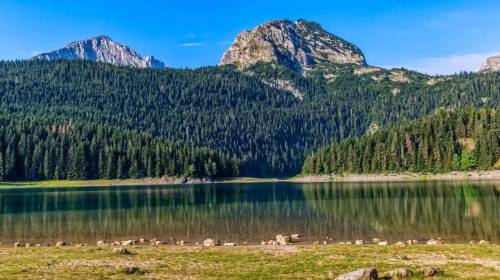Exploring the National Parks in Montenegro: A Perfect Journey Through Natural Beauty
National parks in Montenegro offer canyons, lakes, and peaks. Explore them by car for freedom, culture, and unforgettable landscapes.
With its 13,812 km², Montenegro is one of the smallest countries in the Balkans, yet it is home to as many as five national parks. The national parks in Montenegro make up almost eight percent of the country’s total territory, encompassing mountain massifs, glacial lakes, and canyons, which is quite impressive for such a small nation. When it comes to exploring them, the best way to do so is by car, since driving is precisely what gives you the opportunity to connect them into one unforgettable journey.
From the primeval forest of Biogradska Gora and the beauty of Lake Skadar, all the way to the peaks of Lovćen, Durmitor, and Prokletije, the national parks in Montenegro attract hiking enthusiasts as well as those who simply want to enjoy the serenity of untouched natural landscapes. In the following sections, we will present the most important highlights of each park, along with tips that will help you plan your road trip in the best possible way. So let’s get started...
Overview of the National Parks in Montenegro
As we already mentioned in the introduction, almost eight percent of Montenegro’s territory is covered by national parks, preserving landscapes that range impressively from mountain peaks to some of the most beautiful lakeshores. Each park offers visitors a completely different experience – from massive coastal fjords and some of the deepest canyons in Europe, to peaceful, centuries-old forest trails.
It is precisely this diversity that makes the national parks in Montenegro perhaps the country’s strongest “asset.” Another highlight of the journey is the drive itself, since the roads connecting the national parks in Montenegro pass through landscapes that change almost every kilometer.
Protected Areas and UNESCO Sites
The five national parks of Montenegro – Durmitor, Prokletije, Lovćen, Lake Skadar, and Biogradska Gora – encompass both natural and cultural landmarks. They include primeval forests, glacial lakes, and imposing canyons, all testifying to the richness of such a diverse environment within a small territory. Among them, Durmitor stands out in particular, together with the Tara Canyon, which is protected by UNESCO due to its exceptional geological and ecological value.
Management of these areas is entrusted to a state agency that combines nature conservation with the development of sustainable tourism. This ensures that habitats remain intact while still being accessible to visitors in a way that does not endanger their future.
Wildlife and Biodiversity of the National Parks in Montenegro
When it comes to natural wealth, the national parks in Montenegro are home to numerous endemic and protected species. One of them is Biogradska Gora, which, thanks to its primeval forest and wildlife such as chamois and brown bears, is a truly unique site. On the other hand, Lake Skadar is a key habitat for migratory birds in Montenegro, which is why many visitors consider it a paradise for birdwatching.
In addition, the mountain ranges of Prokletije and Durmitor provide habitats for species adapted to extreme conditions, which demonstrates just how diverse the biodiversity of these areas truly is. This natural richness of the national parks in Montenegro is also a reflection of the country’s unique climatic and geographic position.
Practical tip for visitors: be sure to bring binoculars when visiting Lake Skadar, as the chances of spotting some of the rarest bird species are very high.
Best Time to Visit and Accessibility
The ideal periods for exploring the national parks in Montenegro are late spring, summer, and early autumn, when weather conditions are most favorable. Winter, especially in Durmitor, is more suitable for skiers and fans of winter sports than for hikers and trekkers, which you should definitely keep in mind (in addition, roads are often icy, which can make driving much more difficult, particularly for drivers not used to such conditions).
When it comes to accessibility, it varies – while Lovćen National Park is easily reached from coastal and central cities, Prokletije requires additional preparation and more detailed travel planning. Furthermore, most of the national parks in Montenegro have marked trails and visitor information centers, although in some areas the transport infrastructure is still not fully developed.
Driver’s tip: roads around Lake Skadar can be narrow and busy during the summer months, so it’s wise to set off early in the morning to avoid crowds. If you happen to meet a car coming from the opposite direction on such a road, it is very important not to panic!
Did you know? Although they cover only a small percentage of the territory, the national parks contain more than half of Montenegro’s overall biodiversity.
Durmitor National Park
Among all the national parks in Montenegro, the largest and probably the most famous is Durmitor, which hides sharp mountain peaks, deep canyons, and numerous glacial lakes. The area is framed by the Tara Canyon, one of the deepest in Europe, while the massif itself has more than 40 peaks exceeding 2,000 meters in height.
Mountain Landscapes and Peaks
In case you didn’t know, Durmitor is part of the Dinaric Alps, and its highest peak, Bobotov Kuk, reaches 2,523 meters above sea level. The massif is surrounded by three unique canyons – the Tara Canyon to the north, the Piva Canyon to the west, and the Komarnica Canyon (Nevidio Canyon) to the south. If you are up for an adventure, keep in mind that climbing Bobotov Kuk requires very serious preparation, but the view from the summit, stretching all the way to Albania and Bosnia, rewards every step.
As for natural wealth, countless meadows and dense pine forests shape a landscape that changes dramatically with every season. This constant transformation allows visitors to experience something new every time they return, no matter the time of year.
Black Lake and Glacial Lakes
One of the most famous natural attractions of Durmitor, and of the national parks in Montenegro in general, is Black Lake, located just a few kilometers from Žabljak. The lake is surrounded by pine forests and mountain peaks, with a five-kilometer trail along its shores that is perfect for light and relaxing walks.
In addition, Durmitor National Park contains a total of 18 glacial lakes, which locals often call the “mountain eyes.” Some of them dry up during the summer, while others, like Zeleni Vir, remain filled with water year-round. These lakes also serve as important habitats for many plant and animal species, further highlighting the ecological importance of this area.
Adventures in the Tara Canyon
When it comes to canyons, the Tara River Canyon (often called the “tear of Europe” because of its purity) stretches for nearly 100 kilometers and is also the deepest canyon in Europe, reaching a depth of over 1,300 meters. The wild and fast river has carved out this landscape, turning it into one of the most attractive destinations for rafting and adventure tourism in general.
The most popular activity here is rafting, which takes place from April to October and can range from short trips to full-day excursions. Visitors also love to see the Đurđevića Tara Bridge, which rises 150 meters above the canyon and offers spectacular views.
Tip for adventurers: when it comes to activities in the national parks in Montenegro, rafting on the Tara is undoubtedly one of the most exciting, especially in spring when the water level is highest and the rapids are most dynamic.
Activities and Seasonal Highlights
During summer, Durmitor attracts numerous hikers, cyclists, climbers, and kayaking enthusiasts. A special experience is the Durmitor Ring, a 76-kilometer panoramic route that circles the most beautiful parts of the park.
In winter, however, the area turns into one of Montenegro’s main ski centers, especially near Žabljak, where the slopes welcome both beginners and experienced skiers. One of the most fascinating year-round attractions is the Ice Cave, where ice formations persist throughout the entire year, offering visitors a truly unique experience.
When it comes to the drive itself, it’s important to know that the roads of the Durmitor Ring are narrow and full of curves, so plan your trip carefully and be prepared to take multiple breaks for photographs!
Note: Regardless of the season, visitors to this and all other national parks in Montenegro should carry proper equipment, plenty of water, and insect repellent during the summer months. The rapidly changing mountain weather requires extra attention and good preparation before every tour, something you should always keep in mind.
Lake Skadar National Park
Lake Skadar National Park is the largest lake in Montenegro, which is known for its exceptional ecosystem and rich cultural heritage. This area is home to different species of wild animals and plants, but also offers possibilities to explore villages, small islands, and historical sites.
Precisely because of this diversity, which is not characteristic only of this, but of most national parks in Montenegro, during your visit you will have a unique opportunity to connect nature and tradition in a single experience. The park is most easily reached by car, and the drive itself from Podgorica or Nikšić gives the feeling of a true mountain road trip.
Birdwatching and Pelican Habitat
Lake Skadar is one of the largest bird reserves in Europe, with more than 280 different bird species. It is especially important because it is one of the last breeding grounds of the Dalmatian pelican and the pygmy cormorant. The shallow waters, reeds, and lagoons that adorn this place provide ideal conditions for nesting and feeding of numerous migratory birds.
Birdwatchers most enjoy the areas of shallow channels where herons, eagles, and kingfishers can often be seen. Because of its ecological value, Lake Skadar is included in the Ramsar List of Wetlands of International Importance.
Boat Tours and the Village of Virpazar
What especially characterizes one of the most beautiful national parks in Montenegro is Virpazar, the main entrance to the park and the best starting point for boat rides on Lake Skadar. Here you will have the opportunity to sail in traditional wooden boats through shallow waters and canals rich in wildlife, but also to reach islands and village shores.
The tours can last from one hour to full-day excursions, and often include visits to Grmožur Island or the Pavlova Strana viewpoint. In this way, you can easily experience the blend of calm nature and diverse landscapes without exhausting hiking.
Cultural Landmarks and Island Monasteries
Lake Skadar, in addition to its natural beauty, is one of the national parks in Montenegro that is rich in cultural monuments. On the islands there are monasteries such as Kom Monastery, with frescoes from the 15th and 16th centuries, which preserve traces of a rich spiritual tradition.
The fortresses of Lesendro and Besac testify to the dynamic past, while the remains of the medieval town of Žabljak Crnojevića reveal the former capital of Zeta. These sites allow visitors, along with enjoying nature, to also feel the historical depth of Montenegro.
Did you know? Lake Skadar is so large that its surface area varies depending on the time of year, expanding in summer to over 500 square kilometers.
Lovćen National Park and the Njegoš Mausoleum
Lovćen is located near (locally said “above”) Cetinje and offers spectacular views of the Bay of Kotor, as well as a very large part of Montenegro. The cultural significance of the park is reflected in the Njegoš Mausoleum, located on the second highest peak of the mountain, reached by climbing more than 400 steps. From the plateau, visitors gain a panoramic view of the fjords, the Adriatic Sea, and the rocky peaks of Montenegro.
Forest trails and rocky peaks make Lovćen accessible to those who want an easy walk, but also to everyone ready for more demanding tours. A special experience is the feeling of connecting cultural heritage and natural surroundings in just one, not too long, visit.
Lovćen is most often reached by car, and the serpentine road leading from Kotor is especially famous – with more than 20 sharp bends, it represents a real challenge for drivers, but it also offers unforgettable landscapes. Many travelers say that the drive to the mausoleum leaves just as strong an impression as the monument at the top.
Tip for travelers: the best time to visit Lovćen is early in the morning or in the evening, when there are no crowds, and when the view is the “longest-reaching.”
Biogradska Gora National Park and the Wonders of the Primeval Forest
Biogradska Gora is known for its primeval forest (the national parks in Montenegro have only two, and the other is Crna Poda, which is located nearby, although it belongs to Durmitor National Park), one of the few in Europe that has remained almost untouched. It is located in the northeast of the country, between mountain ranges higher than 2,100 meters, and hides the fairytale-like Biograd Lake. This combination of mountains, forests, and water surfaces creates an ideal setting for a short trip or a peaceful walk.
The park itself has 26 different plant communities, which makes it biologically extremely valuable. In addition to numerous birds and mammals, visitors often enjoy diverse meadows and landscapes that change appearance throughout the year. Although the smallest, Biogradska Gora National Park is clear proof that size is not a measure of natural wealth.
Note: Biograd Lake is reached by an asphalt road from Kolašin, about 10 kilometers long, and there is a small parking lot at the entrance to the park. The drive itself is pleasant and short, but the road is quite narrow, so it is important to drive carefully, especially on weekends when it is busier.
Prokletije National Park and the Accursed Mountains
In the far east of Montenegro, near Gusinje, stretches Prokletije National Park. The highest peak, Zla Kolata, reaches 2,534 meters, and the dramatic landscapes include valleys such as Grebaje, vast pastures, and old remote villages. This landscape is especially attractive to those seeking untouched wilderness and solitude far from the crowds.
In addition, Prokletije is ideal for all those who rent a vehicle and want to explore the less accessible parts of Montenegro, since the flexibility of driving your own car is one of the key factors for a quality visit to this national park in Montenegro.
When it comes to activities, hiking and mountaineering here represent a real challenge, and the reward comes in the form of unique views and a sense of absolute freedom. The harsh nature of Prokletije is home to many species adapted to high-altitude conditions, and the park is increasingly recognized as a destination for authentic adventures, including free climbing.
Did you know? The mountain range of Prokletije is called “Bjeshkët e Nemuna” in Albanian, which means “the accursed mountains,” because of its harsh peaks and the legends connected to them.
Practical Tips for Exploring the National Parks in Montenegro by Car
If you are planning a visit, here are a few tips that will help you get the most out of your trip:
- Plan your routes in advance – the best way to visit several national parks in Montenegro is by traveling through the central and northern part of the country.
- Check your fuel – in the mountain areas, gas stations are not frequent, so always fill your tank before departure.
- Ask about parking – especially in the summer months around Lake Skadar and Lovćen, spots can be limited.
- Count on changeable weather – particularly in Durmitor and Prokletije, where even in summer you may be surprised by rain or fog.
- Offline maps – signal is not always available in the mountains, so it is good to have navigation that works without internet.
Choosing a Reliable Rent a Car Agency
For trips like this, flexibility is the most important factor, and that is exactly what your own car will give you. With Montenegro Car, you can choose a vehicle that fits your plans – from smaller city cars to SUVs that are perfect for mountain roads and park visits with family. The advantages of Montenegro Car are:
- Fast and simple reservation.
- A wide selection of vehicles adapted to trips through the national parks in Montenegro.
- Pick-up locations in Podgorica, at the airport, as well as in all major cities.
- Transparent prices, with no hidden costs.
This way, you have the freedom to set the pace and length of your journey yourself, which is especially important when exploring different parks and routes across Montenegro.
National Parks in Montenegro – Conclusion and a Journey Worth Experiencing
The five national parks in Montenegro represent the very best that this small country has to offer – from Europe’s deepest canyons to primeval forests and mountain lakes. Each of them holds a special story and a different experience, but together they create a unique mosaic of nature and tradition that is hard to find anywhere else.
The best way to experience them is through a road trip, which allows you to combine all these beauties into a single unforgettable journey. In this way, you decide the pace of your trip, choose the viewpoints where you will stop, and create an experience tailored entirely to you. In the end, exploring the national parks in Montenegro becomes much more than just a simple excursion – it turns into an adventure that combines freedom, nature, and unforgettable memories that will stay with you forever.
Frequently Asked Questions
What activities are available in Durmitor National Park?
In Durmitor National Park you will have the opportunity to hike to peaks such as Bobotov Kuk, experience rafting on the Tara River, ski at Savin Kuk, and explore numerous glacial lakes. Visitors can also visit the Ice Cave, participate in guided eco-tours, or try authentic activities such as horseback riding.
How do I get to Biogradska Gora National Park from Podgorica?
From Podgorica, the trip to Biogradska Gora usually takes about one hour and twenty minutes by car heading northeast. Public transport options are limited, so it is recommended to rent a vehicle.
What are the entrance fees for the national parks in Montenegro?
Ticket prices depend on the park. For example, entrance to Lake Skadar National Park costs around 5 euros. In other parks, prices may differ but most often amount to about 3 euros.
Which national park in Montenegro is best for wildlife watching?
Durmitor, Biogradska Gora, and Prokletije are the national parks in Montenegro that offer the best options for wildlife enthusiasts. They are home to bears, wolves, deer, eagles, and rare bird species, while Biogradska Gora is especially known for its primeval forest habitat.
Are there guided tours available in Lake Skadar National Park?
Yes, guided birdwatching tours are available in the park, as well as boat rides. These tours usually include bird colonies, wetlands, and cultural sites such as island monasteries.
What accommodation options exist near Lovćen National Park?
In the surroundings of Lovćen you can find hotels, as well as small village houses and guesthouses, especially in the village of Njeguši. Also, staying in nearby towns such as Kotor and Cetinje offers a wider choice of hotels and apartments, with easy access to one of the most beautiful national parks in Montenegro.
